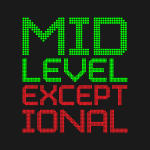NBA May Try to Avoid Massive Salary Cap Spike
The salary cap in the NBA is directly tied to how much Basketball Related Income (BRI) the league generates in any given year. As the league makes more money, the salary cap should rise, and players will be paid more.
A major source of income for the NBA is television contracts. I’ve previously written on how a new deal could change the financial landscape of the league, and assuming the league’s popularity continues to grow, the next contract figures to be massive.
After the 2015-2016 season, the league will be in the market for a new deal. It’s expected that this one will surpass the current $930 million annual deal with ESPN/ABC and TNT, which could lead to a spike in the salary cap for the following season.
It looks like this is a problem that the owners already have their eyes on.
Via Zach Lowe over at Grantland:
And that’s where things get interesting: Executives on lots of teams have gotten the sense from the league office that the NBA will try to smooth the increase of the cap level to minimize the impact of any massive one-year jump in revenue. Exactly how it would do that is unclear. The precise team salary cap — $58 million last season, $63 million this season — is tied to overall league revenues; the two rise and fall together. Players are guaranteed about 50 percent of the league’s “basketball-related income,” and the league and union set the cap figure so player salaries add up to a number in that 50 percent ballpark.
When the BRI spikes, the players are entitled to their 50% share. This is set in stone, but it doesn’t necessarily have to be in the form of a salary cap increase. There are alternatives where the players could still get their money without drastically changing the salary cap.
It should be noted that although there is a salary cap “floor” built into the CBA, it’s a fairly soft rule. An owner will have to pay out 90% of the cap every year; but if he fails to do so by the end of the season, the difference will simply be paid out to his existing players.
For example, let’s say a team is $10 million under cap floor on the day of the team’s last regular season game. The “punishment” is that the owner is required to pay out the $10 million difference to the players already on his roster.
This means that even if the owners fail to avoid a massive salary cap spike following a new television deal, they don’t necessarily have to go crazy in free agency to hit the 90% floor. The team can simply keep the roster as is and spread out the cap difference amongst its players at the end of the season to hit the 90% floor.
So, no, a team won’t have to go spend a stupid amount of money on a marginal player just to hit the salary floor.
One possible solution is every player receiving a raise on their existing deal equal (or close) to the percentage increase of the cap. This is sort of the opposite of what the owners suggested at one point during the lockout, when they wanted to slash the cap and decrease the value of existing contracts so teams would not be overly penalized for larger deals signed prior to the new CBA.
Under a proposal like this, if the cap were to jump a massive amount in one year, the value of existing contracts would rise in accordance with the cap so that players already under contract would not be underpaid relative to the free agent class of that offseason, and so teams would not be pressured into spending larger amounts on that year’s class than their skill sets would require just to hit the salary floor (even though the penalty for not hitting the floor is basically non-existent).
As an example, let’s assume a cap of approximately $66 million for the 2015-16 season (recent projections have pegged it around there and we will round off for easier calculations), and that it rises to $80 million when the new TV deal hits in 2016. This would represent an increase of over 21%, much larger than previous increases. A player that signed a “max” deal in 2015 would be looking at a starting salary around $16.5 million, while one of the same experience level signing in 2016 would get a starting salary around $20 million. That’s a massive difference.
In order to make up for that, it’s possible the league and the union could agree to an increase in the value of pre-existing contracts, say around 15%, which would make the prior year’s cap functionally $76.9 million, and thus the new cap would only have increased around 5.4% as opposed to over 21%.
The escrow system could also be a tool used by the owners to avoid a huge cap change. As stated earlier, the players are entitled to their 50% of BRI. If the raise in the cap doesn’t completely represent the increase of BRI, owners could pay the difference to the players through the escrow account.
Let’s assume that the BRI change should trickle down to a 10% increase in the salary cap. It’s possible that the league and the union agree to could only raise the cap by 3%, with the owners paying the other 7% into the escrow account, in order to avoid a situation like the one described above where one year’s free agency class is benefitted far more than any other. The escrow money would then be paid out to the players, and they would ultimately still get their 50% of BRI without drastically changing the salary cap. This is probably the most likely solution, and indeed the one Lowe floated in his column.
There are a few scenarios that could realistically happen, but one thing is for sure; the players will make sure they get their 50% of BRI. Maybe it won’t be in the form of a higher salary cap, but through a combination of methods, they’ll be seeing bigger checks. Understandably, the owners will do whatever they can to avoid a huge spike in the salary cap that could shock the free agency market.


